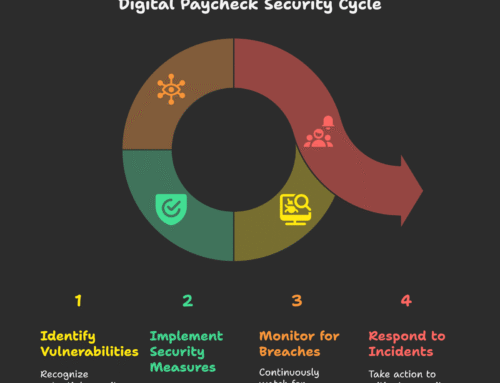Are you frustrated about your current performance management system not helping you retain top talent or improve employee morale? Or are you not seeing the desired results despite investing significant time and effort into your strategy? Don’t worry, you’re not alone, 88% of organizations find traditional performance management ineffective and outdated.
Some companies make the mistake of treating performance management as a one-time event rather than an ongoing process. The problem with this approach is that it fails to provide real-time feedback and often results in employees feeling undervalued and unmotivated.
However, it’s not all bad news. You can easily design an effective performance management system tailored for a significant positive impact on your employee performance and engagement.
In this article, we will provide you with practical steps to develop a modern performance management system that’s proven to work. By the end, you’ll have the tools and insight to develop a performance management strategy that not only benefits your employees but also enhances your organizational performance and profitability.
So, let’s get started.
Revamp Your Performance Management Cycle
The performance management cycle typically involves setting clear expectations, providing quality feedback, ongoing communication, and helping employees reach their full potential.
In recent years, there has been a shift towards adopting more modern and optimal performance management processes that are focused on employee engagement, happiness, and retention. Some types of performance management activities include:
- Employee recognition and rewards: Recognizing and showing appreciation for employee progress and hard work.
- Performance coaching: Coaching employees on how to improve performance rather than just evaluating their performance.
- Talent management: Identifying and developing employees who have the potential to become future leaders and help in career progression.
- Regular performance reviews: Providing regular feedback and frequent check-ins throughout the year rather than waiting for the traditional annual review.
How Can Goal Setting Revolutize The Performance Management Process?
Performance assessments are critical to an entire organization’s success. However, to make them effective, we need to rethink the entire performance appraisal process. Rather than treating performance management as an infrequent exercise, we should approach it as a continuous process to benefit everyone in the organization.
The key is to start with clear and cascading goals that are visible to everyone. This means that each employee’s goals should ladder into their departmental goals, which in turn ladder into the organization’s strategic objectives.
In a continuous performance management process, goals can be updated or adjusted depending on changes in strategy or disruption. When a goal is completed, it’s checked off in the system, giving colleagues and managers full visibility into progress.
By focusing on key features such as organizational objectives rather than just the process of reviewing, you will increase employee engagement, improve business processes, and ultimately get outcomes. At the same time, employees will feel more invested in their work and motivated to achieve organizational goals.
When it comes time for performance reviews, managers will have quick and full visibility into who accomplished what and when.
With that, let’s explore some actionable ways you can improve your employee performance management system so that it not only aligns with your business objectives but helps your employees reach their full potential.
6 Ways To Improve Your Performance Management System
These practical methods will help you create a robust and integrated talent management system that promotes continuous learning and development, increases employee engagement, and ultimately helps you to improve the performance of employees.
1. Identify Organizational Objectives & Goals
Start by conducting a thorough analysis of your organization’s current performance and future goals.
Typically this analysis includes:
- Your organizational strategy
- Key performance indicators (KPIs)
- A review of your organization’s mission and vision
Ideally, you want to use the identified goals as a basis for developing a proper performance evaluation system that aligns individual employee goals with those of your organization.
So, how do you achieve this?
The process is quite simple and involves using a cascading goals approach. Essentially, this involves breaking down your business objectives and goals into smaller, more specific goals and objectives for each department or team.
These smaller goals and objectives are then further broken down into individual employee goals and objectives that are aligned with your larger organizational goals.
Unlike typical approaches, employees get to see clearly how their individual performance will contribute to the overall success of the organization. It also ensures that everyone is working towards the same goal, which helps improve communication and collaboration between teams.
For the performance management system to be effective, set SMART goals – goals that are specific, measurable, attainable, realistic, and timely. This will help employees understand what is expected of them and provide a clear framework for evaluating their performance.
2. Develop A 2-way Feedback System
Feedback should not be a formal and rigid process that involves a typical annual or bi-annual performance review.
Instead, create a habit of regularly providing employees opportunities to receive constructive and continuous feedback and seek clarification. The goal is to encourage 2-way communication during feedback sessions so that employees can ask questions on an individual level and provide their input on their performance.
The best part is that the current feedback process is more flexible and customizable, with a variety of feedback methods available to suit the needs of individual employees, skill levels, and your organization as a whole. You can use formal performance reviews, talent reviews, informal check-ins, peer feedback, or even employee self-assessments rather than just annual appraisals.
After all this, how do you determine if your company’s performance improved? You will see most or all of the following things in place:
- Organizational department goals are met
- People understand how they need to improve
- High morale / low turnover or disengagement & functional teams
3. Use Technology
You can leverage technology, including performance management tools, to streamline your processes and gain valuable insights. With the help of employee performance management software, you can create a more efficient and effective performance management system.
These include automatic reminders for performance reviews or even applicant tracking, time tracking, and complete tracking.
This can help reduce administrative burden and free up time for managers to focus on coaching and development. With the help of data analytics, you can even identify customer performance and trends and monitor employee progress.
Essentially, features of performance management software include:
- Dashboard
- Performance tracking
- Appraisal & feedback
- Development planning
- Platform customization
- Career succession planning
You can even take it one step further by incorporating real-time data streaming into your data analytics strategy. This comprehensive tool allows you to collect, process, and analyze data in real time, allowing you to make faster and more informed decisions.
For example, if your organization is involved in the production and selling of face masks, you can use real-time data streaming to monitor the production process and identify any issues that may arise.
By using sensors and other monitoring devices, you can collect real-time data on key production metrics such as the number of face masks produced, production speed, choke points, and quality control measures.
This data can then be streamed in real-time to your data analytics platform, allowing you to monitor the production process and identify any issues as they occur.
Additionally, you can leverage a personal assistant to help managers and employees stay on top of their performance management tasks and goals. A personal assistant can help automate routine tasks such as scheduling, reminders, and data entry, freeing up valuable time for employees to focus on higher-value activities such as coaching and development.
Remember that when you leverage technology, you’re not only improving bad performance, but you’re also helping your organization by creating a more efficient and effective talent management system.
4. Create Performance Improvement Plans

Despite all your efforts, some employees might still fail to meet expectations. To make it easier for them, you can develop performance improvement plans (PIPs). These are formal plans that outline specific areas of improvement, goals, and a timeline for achieving those goals.
Here’s how you can create an effective PPI:
- Clearly define the problem: Accurately explain the specific areas where the employee is falling short and how their performance is affecting the organization.
- Set clear team goals and expectations: Clearly outline the individual goals and expectations for improvement in the PIP. The goals should be specific, measurable, and achievable within the designated time frame.
- Provide support and resources: Provide the employee with the resources and support they need to meet the goals outlined in the PIP, like training, coaching, and mentoring.
- Monitor progress and provide feedback: Regularly monitor the employee’s progress and provide ongoing feedback and support so that the employee stays on track and has the necessary resources to succeed.
- Use PIPs as a learning opportunity: Encourage the employee to provide feedback on the process and use the insights gained to improve the management system as a whole.
5. Provide Training & Development Opportunities
Investing in your employees doesn’t just mean simply providing training and development opportunities as a checkbox exercise. Prioritize employee growth and instill it as your core culture.
To make your training more effective, use different formats and platforms like videos, gamified learning, and interactive workshops. Instead of boring webinars, you can turn training sessions into informative Youtube videos or create your own podcast so that employees can also learn on the go or during their downtime.
These formats can provide a more immersive and memorable learning experience and cater to different learning styles and preferences. It also shows that you value your employees and that their contributions are important.
After careful consideration of the skill gaps in your organization, you can develop an employee training and individual development plan. Based on the plan: ask yourself what specific training programs are needed and what timelines would fit around your employee’s schedule.
For instance, if we talk about a cleaning company, the employee training and individual development plan could include training on the latest cleaning techniques, including equipment handling and maintenance, pricing strategy, customer service skills, and safety protocols.
By identifying skill gaps and providing the necessary training, a cleaning services business can help employees improve their performance and ensure that they are equipped to provide high-quality cleaning services to clients. You can offer on-the-job training, classroom training, e-learning, coaching, and mentoring.
You can follow what Suburban-K9 did. They offer an apprenticeship program that provides their employees with hands-on experience and different types of dog training to ensure that they can provide the highest quality service to their customers.
This approach to performance management, in turn, helps to build a loyal customer base and drive business growth.
6. Monitor & Adjust As Needed
Even the most well-designed performance management system is not set in stone and needs to be reviewed and adjusted regularly so that it meets the needs of your organization and your employees. Typically this includes getting feedback from employees and managers and analyzing performance reports, and reviewing progress against company goals.
You can then identify areas that need improvement and make adjustments accordingly, these can be:
- Making changes to the process itself
- Making changes to the goals or organizational objectives that employees are working towards
- Incorporating new technology or tools to streamline performance data collection and analysis
Remember to involve your employees in the process. Their feedback will provide you with valuable insights into what is working well and what needs improvement. You can use it to identify any potential barriers or challenges that employees may be facing in meeting their goals or improving their performance.
Conclusion
Developing a proper performance evaluation system that works requires a thoughtful and strategic approach. You can create a system that fosters employee engagement, productivity, and growth, while also driving business success and growth by following these performance management solutions.
Remember to start by setting clear goals, establishing a performance review process, using automated reminders, and monitoring and adjusting the system as needed. Flexible features, such as continuous feedback, direct reports, and ongoing coaching, will also help to create a culture of continuous improvement and drive better results and engagement levels.
With a commitment to continuous performance measurement and improvement, you can build a high-performance culture that sets your organization apart and drives success in today’s rapidly changing business landscape.











Leave A Comment